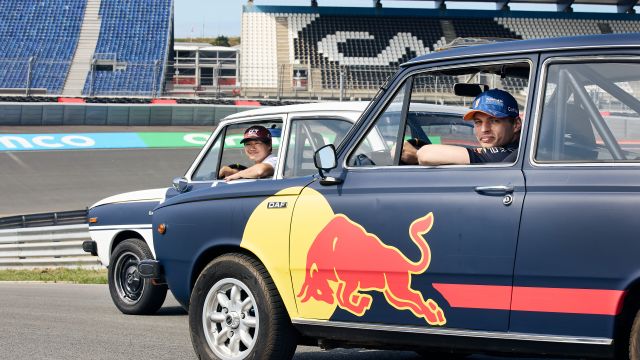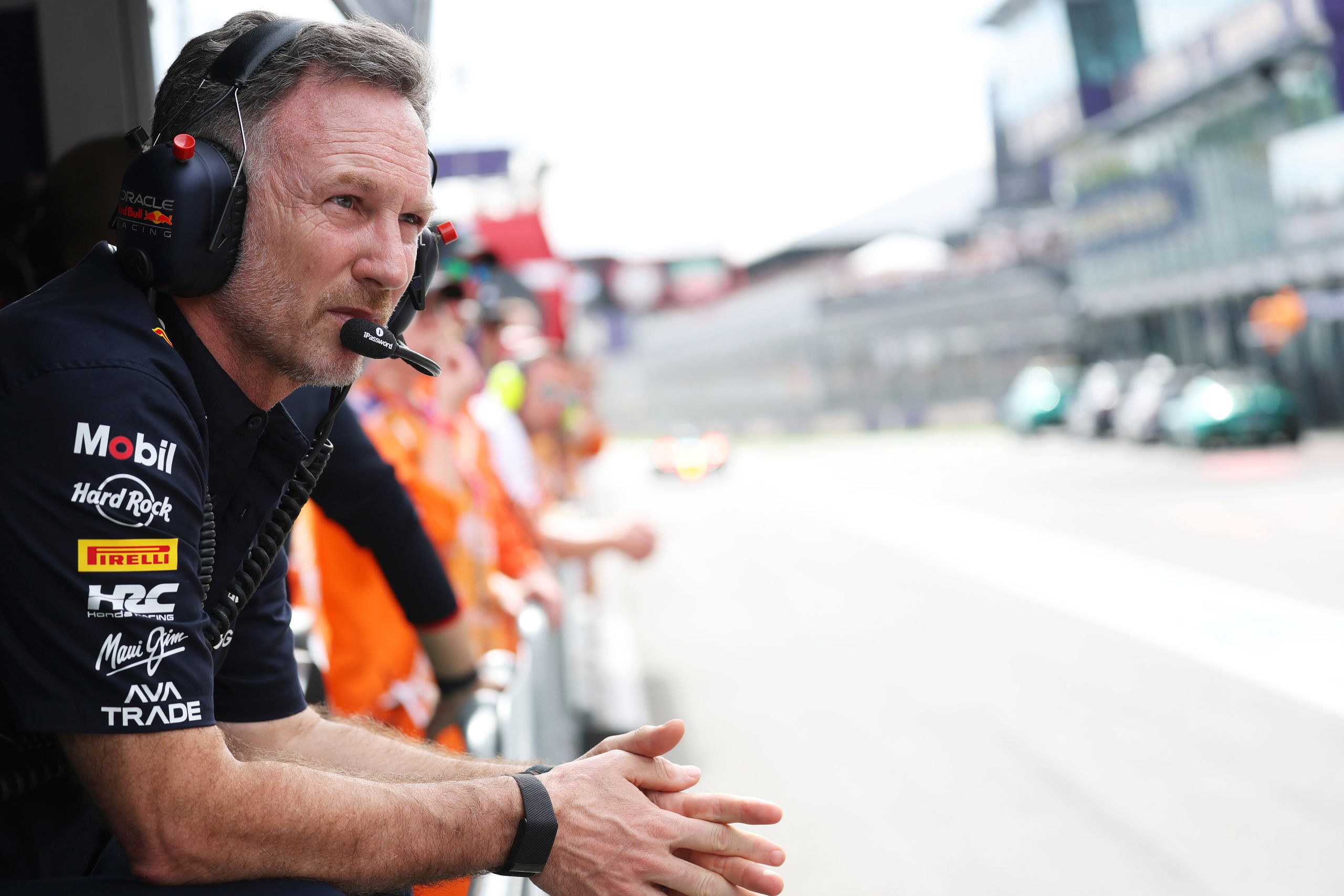What Do F1 Drivers Do For Fun?


Formula 1 drivers are known for their incredible speed, skill, and precision on the track. However, these racing superstars also have interests and hobbies outside of their professional careers. Given their demanding schedules and intense focus on training, one might wonder what F1 drivers do for fun and how they manage to balance their personal lives with their racing careers.
Off the racetrack, F1 drivers engage in various activities that showcase their passions, individuality, and unique talents. Some drivers enjoy adrenaline-pumping hobbies, while others may take up more relaxed and introspective pursuits. Additionally, team bonding and travel are significant aspects of F1 drivers’ experiences, affording them unique opportunities to explore new cultures and engage with one another in different settings.
While F1 fans have plenty of entertainment with the F1TV app, gaming, and betting https://match.center/best-betting-sites/ it can be a different story for F1 drivers who are always under the microscope…
Key Takeaways
- F1 drivers participate in various individual hobbies and group activities off the track.
- Fitness, training, and travel are integral aspects of drivers’ lifestyles and contribute to their leisure experiences.
- Many drivers devote time to charity and community work, showcasing their dedication beyond the racetrack.
F1 Drivers’ Hobbies
Outdoor Activities
Many F1 drivers enjoy outdoor activities to stay physically and mentally fit. Cycling is a popular choice among drivers, as it not only offers an excellent cardio workout, but also helps develop leg strength and stamina. Some drivers, like Valtteri Bottas and Daniel Ricciardo, often participate in group cycling events or long-distance rides during their free time.
Skiing is another favorite outdoor pursuit for some F1 drivers. The adrenaline rush and speed of downhill skiing can be exhilarating, while still allowing drivers to maintain and improve their balance, coordination, and core strength. However, drivers must be cautious, as skiing carries a risk of injury.
Gaming and Simulators
F1 drivers also engage in virtual racing and gaming for fun. Many participate in esports events, both as competitors and as spectators. Esports gives drivers a chance to compete against their teammates and counterparts in other racing categories, while still enjoying the thrill of racing without risking their real-life cars.
In addition to esports, drivers use racing simulators to practice and improve their skills. Simulators allow drivers to replicate on-track conditions and vehicle behavior, helping them gain insight into improving their racing line, braking points, and more.
Social Media Engagement
With today’s digital age, it’s not surprising that F1 drivers actively participate in social media. They use platforms like Instagram, Twitter, and Facebook to share personal moments, behind-the-scenes content, and to interact with their fans. They often post about their training, travels, and personal life, giving followers a glimpse into their world away from the race track.
Social media engagement allows drivers to connect with their fans, build their personal brand, and promote their sponsors. Many F1 drivers have amassed millions of followers, underlining their global appeal and the sport’s growing popularity.
Team Bonding and Travel
In the high-pressure world of Formula 1 racing, team bonding and travel are essential components for maintaining a healthy and functional team dynamic. Teams like Red Bull, Ferrari, Mercedes, and Alpine, among other F1 teams, understand the importance of fostering strong relationships among their drivers, engineers, and staff.
Team bonding activities are commonly integrated into the busy travel schedules of F1 teams as they traverse the globe for various races. These activities might include excursions to local landmarks, team dinners, and shared recreational experiences, such as go-karting or playing sports together. Time spent on bonding exercises allows the drivers to relax and unwind after intense races while fostering camaraderie between not only the drivers but also their respective engineers and staff members.
Travel also provides an opportunity for the teams to engage with one another on a more intimate and personal level. As the teams explore new cities and destinations, they’re able to strengthen their sense of unity and cooperation. The relationships formed away from the racetrack can significantly impact their performance and morale during races.
Formula 1 teams invest heavily in ensuring their drivers, engineers, and staff have a comfortable and enjoyable experience while traveling. This includes luxury accommodations and close attention to their physical and mental well-being. The teams collectively understand that a happy and cohesive squad is crucial for success in this highly competitive motorsport.
Fitness and Training
F1 drivers prioritize physical fitness to maintain peak performance during races. They focus on various aspects of fitness including strength training, cardio, and endurance. One critical area of focus is their neck muscles, which require specific exercises to handle the G-forces experienced during races.
Exercising regularly is crucial for F1 drivers. Their exercise regimes involve a mix of cardio workouts, such as running and cycling, to build stamina and maintain a healthy heart rate. These workouts help them cope with the physical demands of races that can last for hours.
Strength training plays a vital role in a driver’s success. Sufficient muscle mass not only supports their physical well-being but also helps in controlling the car and managing fatigue. They usually focus on core strength, arms, and legs through weightlifting and resistance exercises.
Endurance is another significant aspect of an F1 driver’s fitness regime. They need high levels of stamina to stay alert and maintain concentration throughout the race. Endurance training might involve long-distance running, swimming, or cycling, and it helps in increasing their heart rate and improving their cardiovascular health.
Apart from physical training, F1 drivers also focus on sharpening their reflexes using various drills and exercises. Quick reflexes are essential for reacting to split-second decisions on the track, such as overtaking, braking, and maneuvering.
Recovery is a vital part for ensuring that an F1 driver’s body remains in optimal condition throughout the racing season. They incorporate activities such as stretching routines, yoga, and massages into their schedule. These recovery techniques help restore their muscular balance, alleviate any muscle soreness, and maintain flexibility.
In summary, an F1 driver’s fitness and training routine is diverse, covering various aspects of strength training, cardiovascular health, endurance, reflexes, and recovery. Their commitment to staying fit ensures they can perform at their best during races, in a sport where physical and mental strength is just as important as a well-tuned car.
Charity and Community Involvement
Many Formula 1 drivers are actively involved in charity and community initiatives outside of their professional racing careers. Their status as elite athletes and celebrities often enables them to create a significant positive impact in the lives of others.
Lewis Hamilton, for instance, is a well-known supporter of various charitable causes, such as education and environmental protection. Max Verstappen has also been involved in multiple charity events, participating in fundraisers and supporting children in need. Charles Leclerc joined the Princess Charlene of Monaco Foundation, where he actively promotes water safety awareness and supports drowning prevention initiatives.
Alex Albon, George Russell, and Valtteri Bottas have participated in charity racing events and donated personal items for auction to raise funds for noteworthy causes. Daniel Ricciardo, Lando Norris, and other drivers have utilized their social media platforms to engage their fan base and promote charitable foundations close to their hearts.
Esteban Ocon and Kevin Magnussen have also been ambassadors for charitable organizations, helping to raise awareness about various social issues, such as mental health and children’s welfare, giving back to their local communities through diverse charitable actions.
Yuki Tsunoda and Pierre Gasly, like their fellow Formula 1 drivers, contribute to charitable causes by participating in fundraising events and working closely with organizations that focus on disaster relief, sports development, and supporting the less fortunate.
Many Formula 1 drivers are actively involved in charity and community initiatives as part of their personal interests and responsibilities. They use their influence and platforms to make a difference in the lives of others and contribute to creating a positive impact on the world.
Challenges and Adjustments
Formula 1 drivers, like everyone else, are constantly adapting to various challenges. During the COVID-19 pandemic for example, it was no different. With many race events postponed or canceled, drivers turned to unique ways of having fun and maintaining their skills.
As real-world race tracks temporarily shut down, drivers shifted their focus to grid factory simulators and home simulators. These virtual platforms provided them a means to stay sharp in anticipation of race weekends. Some drivers took part in online competitions and raced on Twitch, engaging with fans and their fellow racers while keeping the spirit of the sport alive.
Race weekends are intense, with qualifying laps, practice sessions, and the actual race day. It’s vital for F1 drivers to find ways to unwind and mentally recharge. During off-season periods, drivers explore different hobbies and interests. Many take up other sports or participate in charity events, empowering them to connect with others and gain new experiences.
Ayrton Senna, Michael Schumacher, and other world champions encountered unique challenges during their careers. Adapting to changes in the world of Formula 1, such as evolving regulations, new cars, and overcoming personal obstacles, was crucial to their success.
For instance, the physical demands of F1 racing include enduring intense g-forces that transform their bodies into human ballasts. Drivers have developed specific training regimens to build their strength and resilience, ensuring they can withstand these forces during a race. In addition to physical workouts, they also work on mental preparation to stay focused and cope with pressure.
Formula 1 drivers face numerous challenges and adjustments in their careers and personal lives. Whether it’s adapting to new technologies, maintaining physical and mental fitness, or finding ways to decompress, these professionals rely on their constant pursuit of balance to remain successful on and off the track.
What Do F1 Drivers Do for Fun? – Final Thoughts
In conclusion, Formula One drivers lead a life that is full of adrenaline, speed, and excitement. However, when they are not racing, they also indulge in a variety of fun activities to unwind and relax. From extreme sports to music, F1 drivers engage in a range of activities that help them stay fit, focused, and happy.
Some drivers like Lewis Hamilton and Daniel Ricciardo are known for their love of music and often spend time composing and producing their own tracks. Others like Max Verstappen and Carlos Sainz Jr. enjoy extreme sports like skiing, snowboarding, and mountain biking. Meanwhile, drivers like Lando Norris and Charles Leclerc are avid gamers and often spend time honing their skills on popular video games.
Apart from these activities, F1 drivers also engage in philanthropic work and charity events. Many drivers like Sebastian Vettel and Fernando Alonso have their own charitable foundations that work towards various social causes.
In essence, F1 drivers are not just skilled and talented racers, but they are also individuals who lead a well-rounded life outside of the track. Their hobbies and interests not only help them stay focused and motivated but also make them more relatable to their fans.





